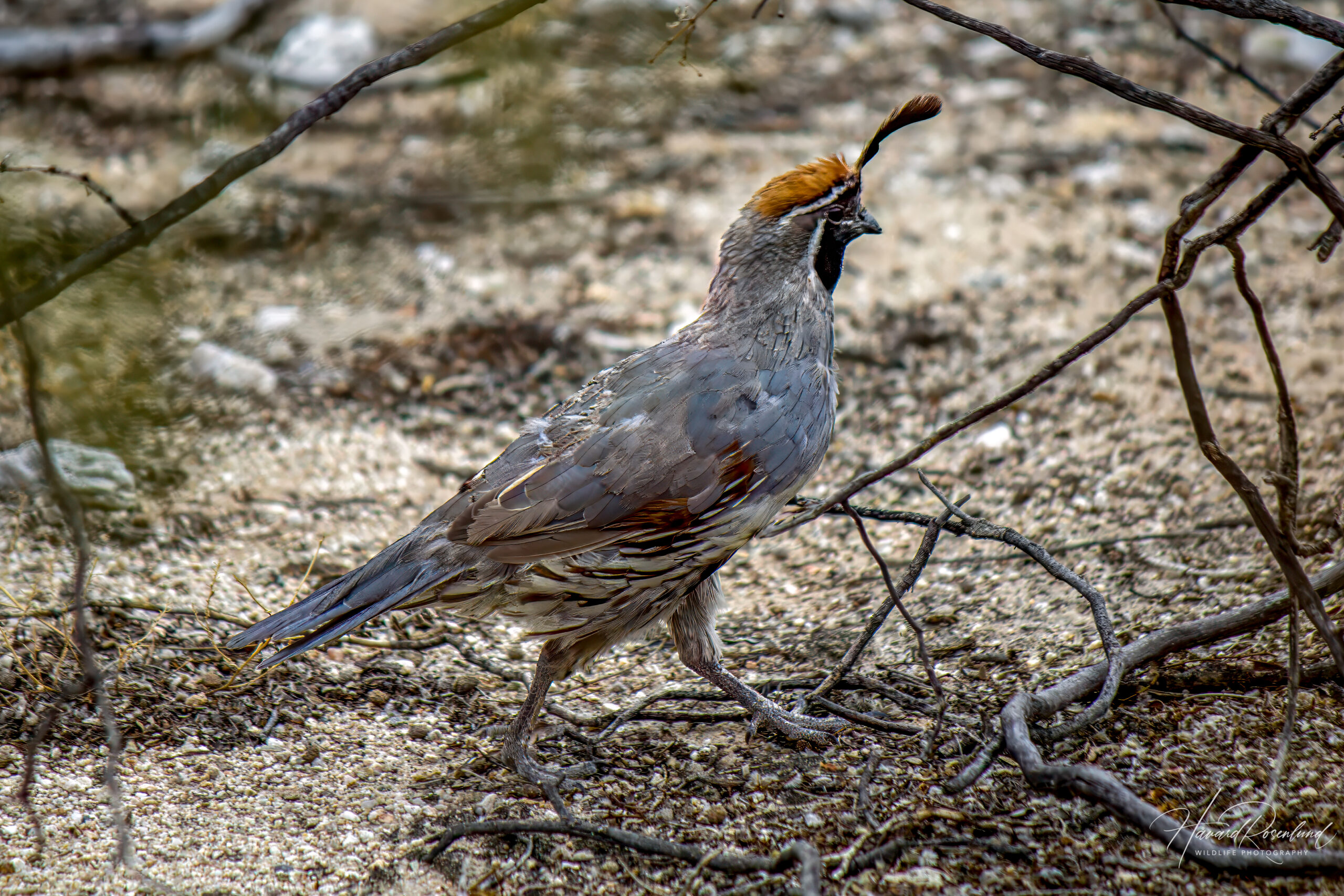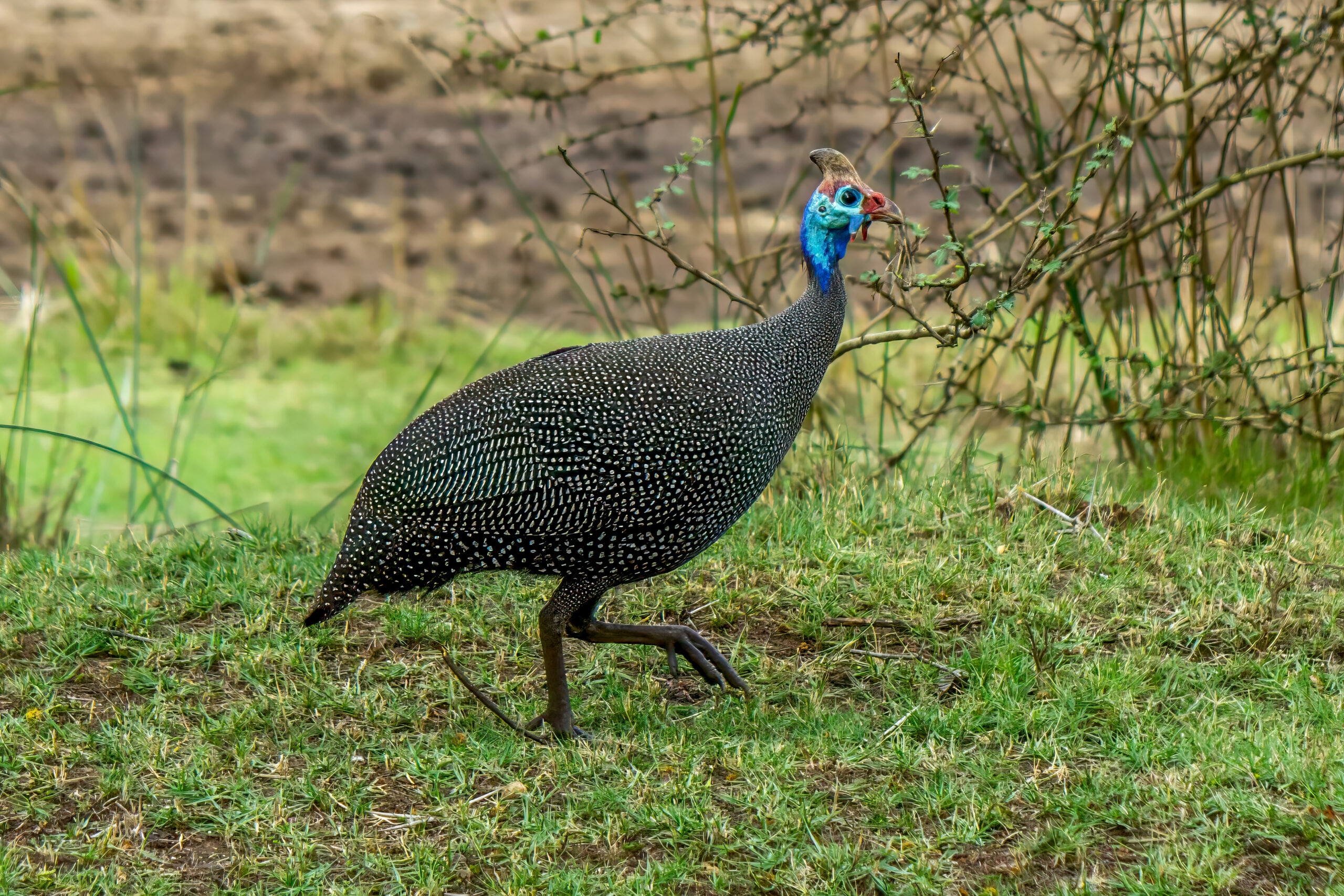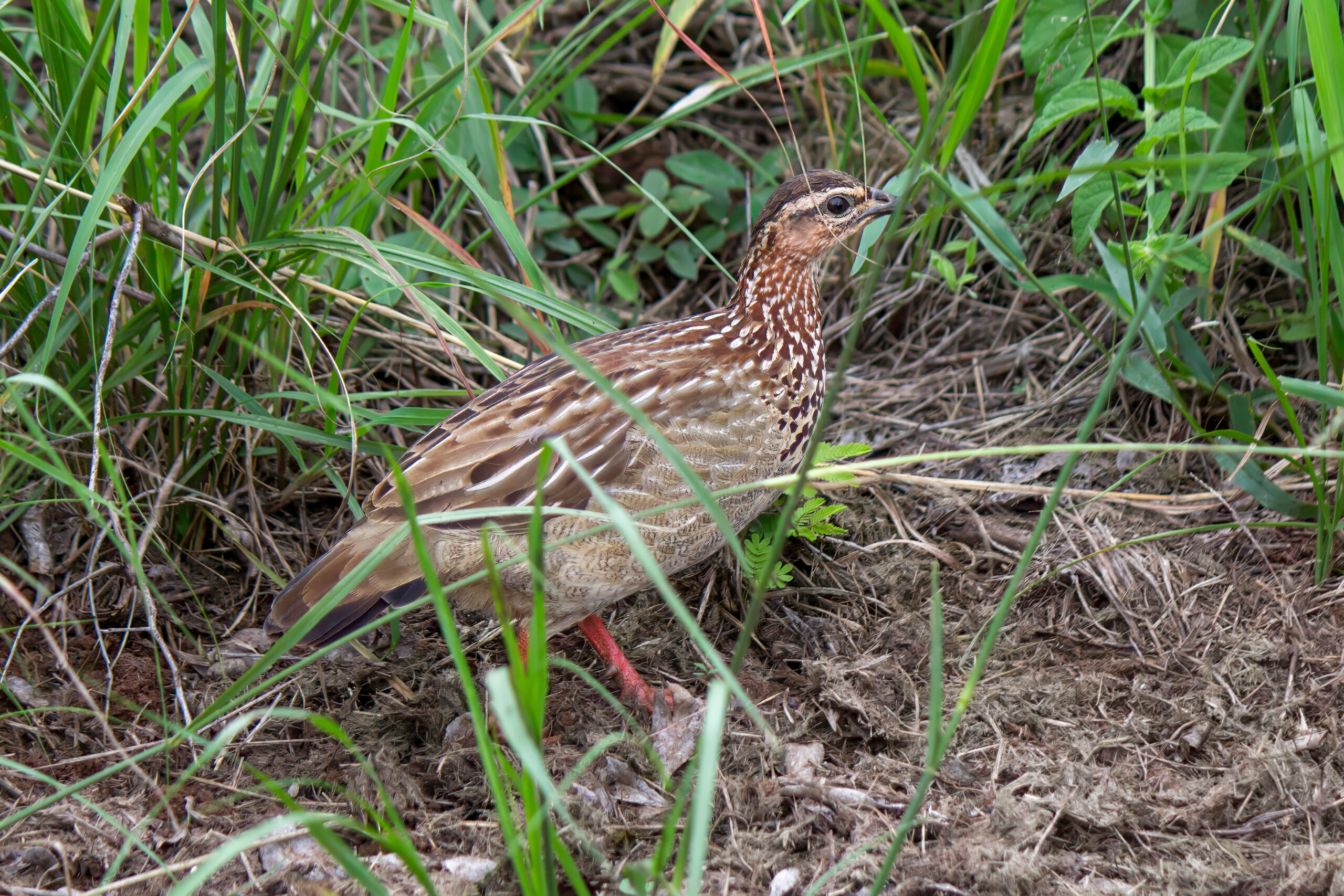Description
The Gambel’s quail (Callipepla gambelii) is a distinctive bird with a plump body and a prominent topknot. It is native to the desert regions of the American Southwest and Northwestern Mexico. The species has also established populations on Hawaii after being introduced on the islands. Measuring about 28 cm (11 in) in length, they are relatively small with a greyish-brown body, a black face accented with a white stripe, and a chestnut cap. Males are particularly striking with a black belly patch. A unique feature is their forward-facing, comma-shaped topknot, more pronounced in males. Gambel’s quail closely resembles the California quail (Callipepla californica), but can be distinguished by the lack of scaling on the lower belly and the pure white tips on the tail feathers. Their range, primarily in the Sonoran Desert, also helps in identification.
Diet & habitat
The Gambel’s quail thrives in arid desert lowlands, particularly areas with a mix of brush and open spaces. They are often found near water sources. Adapted to desert life, they can extract moisture from their diet, which primarily consists of seeds and leaves, supplemented by occasional insects. Gambel’s quail forage in groups, scratching the ground and vegetation to uncover food, often feeding at dawn and dusk to avoid the daytime heat.
Nesting
Breeding typically occurs in spring, following the rain, which is vital for food availability. Males perform a prominent call from elevated positions to attract females. They build their nests on the ground, hidden in vegetation, using grass and leaves. Females lay about 10-12 eggs, which are incubated for about 21-23 days. The young are precocial, able to walk and feed shortly after hatching. Fledging occurs within a few weeks, but family groups, called coveys, often stay together.
Status
Gambel’s quail has a stable population trend. However, their dependence on specific desert habitats makes them vulnerable to habitat loss and climate change. It is listed as least concern on the IUCN Red List.







